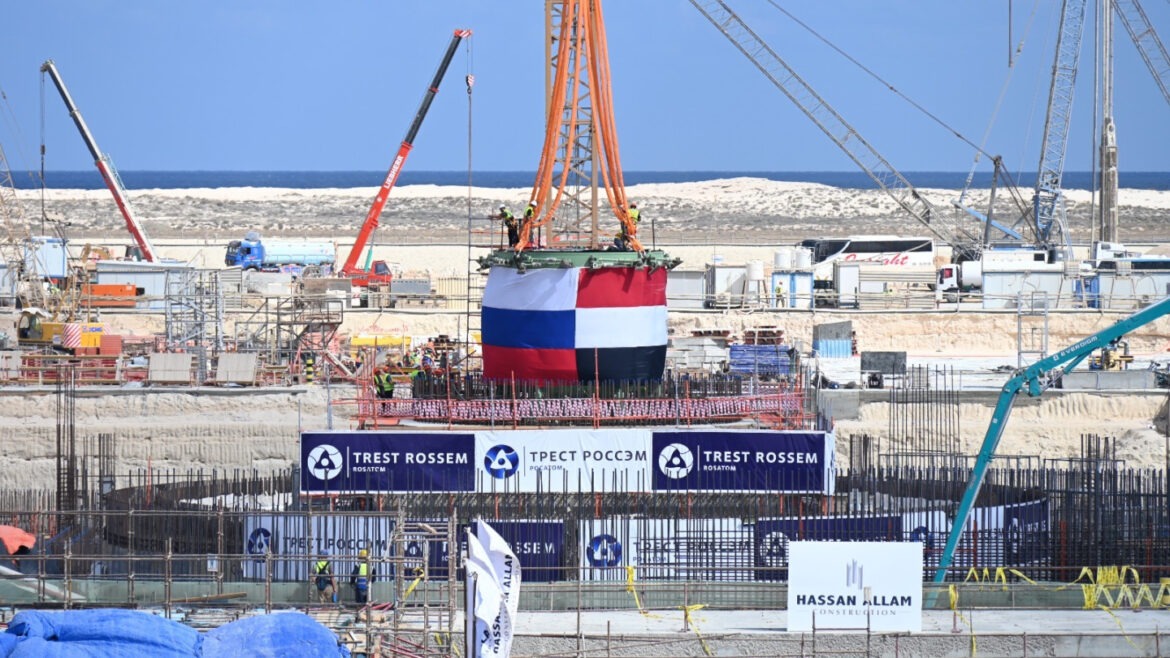Egypt is taking bold strides toward energy security and climate resilience as construction progresses steadily at the El Dabaa Nuclear Power Plant—Africa’s most ambitious nuclear energy project to date. Slated to produce 3.6 gigawatts of electricity by 2029 and 4.8 GW by 2030 upon completion of all four reactors, the facility is poised to become a cornerstone of Egypt’s clean energy transition and a model for the continent.
Located along Egypt’s Mediterranean coast, the El Dabaa site is now recognized as the world’s largest nuclear project by geographic footprint. The plant is being built in collaboration with Russia’s state nuclear corporation, Rosatom, under a turnkey agreement signed in 2017. According to Rosatom Director General Alexey Likhachev, the project is “progressing on schedule,” with a major milestone set for November 2025: the installation of the first reactor vessel.
A Strategic Clean Energy Pivot
For decades, Egypt pursued nuclear energy with varying intensity. However, it wasn’t until the post-2007 era—particularly under the leadership of President Abdel Fattah El-Sisi—that political will coalesced around the vision. Speaking to The New Arab, nuclear energy expert Dr. Ali Abdelnabi described this era as “a turning point in Egypt’s nuclear journey,” driven by mounting climate risks, energy demand, and the need to diversify away from fossil fuels.
“The escalation of climate change—poverty, water scarcity, food insecurity—has made the pursuit of nuclear energy not just strategic but urgent,” said Dr. Ali.
The El Dabaa plant will rely on Generation 3+ pressurized water reactors (VVER-1200), a technology that meets all post-Fukushima International Atomic Energy Agency (IAEA) safety standards. These reactors feature passive safety systems capable of automatically shutting down operations without human intervention or electrical power, ensuring operational security in even the most extreme conditions.
![A 2022 shot of the first concrete pour at El Dabaa-2 in Egypt [Nuclear Power Plants Authority]](https://www.nuclearafrica.net/wp-content/uploads/2025/06/3k1HNL49qFYXXbJKX3jTHRvg-1024x562.jpg)
Environmental and Economic Game-Changer
El Dabaa is more than just an energy project; it represents a holistic response to environmental degradation and economic vulnerability. The plant is expected to help Egypt avoid emitting over 10 million tons of greenhouse gases annually, contributing meaningfully to the country’s Paris Agreement climate targets.
“Nuclear power is a low-carbon, land-efficient energy source,” Dr. Ali noted. “It protects biodiversity, limits land use, and sustains agricultural areas unlike many traditional and renewable sources.”
Addressing public concerns about radioactive waste, experts explain that only about 3% of the fuel becomes high-level waste. This waste is safely managed through long-term wet and dry storage methods, with future innovations promising the recycling of up to 97% of used nuclear material in next-generation reactors.
Boosting Local Development and Expertise
The El Dabaa Nuclear Power Plant is already transforming its host region into an economic hub. At the peak of construction, the project will employ over 10,000 workers and stimulate growth in sectors such as construction, healthcare, transport, and tourism. Long after construction is completed, thousands of permanent jobs will be supported across various services—including education, housing, security, and recreation.
Egyptian companies are playing a growing role in the project, handling civil engineering, mechanical installation, and electrical works to international standards. Egyptian engineers and technicians have also undergone intensive training in Russia to operate and maintain the facility—laying the groundwork for sustained local ownership and expertise.
“This is not just about energy; it’s about empowering Egypt’s technical workforce and industrial base,” said Dr. Karim El-Adham, a nuclear safety specialist.
Rebalancing Egypt’s Energy Mix
Currently, Egypt remains heavily reliant on oil and natural gas for electricity generation. According to Dr. Karim, this is not the most efficient use of the country’s hydrocarbon resources. “We can achieve far greater economic value by channeling oil and gas into the petrochemical industry instead of burning them for electricity,” he said.
Unlike intermittent renewables like solar and wind, nuclear power offers stable baseload electricity, making it indispensable for grid reliability. While Egypt is scaling up renewables, the country recently revised its 2040 renewable energy target downward, citing natural gas as a transition fuel. The introduction of nuclear power fills this reliability gap while supporting broader energy diversification.
Conclusion: A Model for Africa?
The El Dabaa Nuclear Power Plant represents a bold investment in Egypt’s future, offering clean, reliable, and sustainable energy while catalyzing socio-economic development. Much like the Aswan High Dam in the 20th century, El Dabaa may become a national symbol of technological advancement and energy independence.
With Africa’s energy demand projected to triple by 2050, Egypt’s nuclear path could serve as a blueprint for other nations on the continent. If successful, El Dabaa will not only light up Egyptian homes and industries—it may also ignite Africa’s nuclear energy ambitions.
